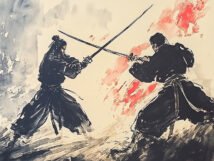Introduction
Asian martial arts have gained immense popularity worldwide, captivating people of all ages and backgrounds. From the graceful movements of tai chi to the explosive power of karate, these martial arts not only provide a means of self-defense but also promote holistic wellness. The practice of Asian martial arts encompasses physical, mental, emotional, and spiritual benefits, making it a comprehensive approach to overall well-being.
Physical Benefits
One of the most obvious benefits of practicing Asian martial arts is the improvement in physical fitness. Regular training in martial arts leads to increased strength, flexibility, and endurance. The various techniques and movements involved in martial arts require the use of different muscle groups, resulting in a well-rounded and balanced physique. Additionally, the cardiovascular demands of martial arts training help improve heart health and increase stamina.
Moreover, practicing martial arts can reduce the risk of injury. Through proper training and conditioning, individuals learn how to move their bodies efficiently and effectively, minimizing the chances of accidents or strains. The emphasis on proper form and technique in Asian martial arts ensures that practitioners develop a strong foundation and reduce the risk of injury during training or in everyday life.
Mental Benefits
In addition to the physical benefits, Asian martial arts also offer numerous mental advantages. Regular practice improves focus, concentration, and discipline. The intricate movements and techniques require practitioners to be fully present and engaged, sharpening their mental acuity. This enhanced focus can carry over into other areas of life, such as work or school, leading to improved productivity and performance.
Furthermore, practicing martial arts can boost self-confidence and self-esteem. As individuals progress in their training and achieve new milestones, they develop a sense of accomplishment and belief in their abilities. This newfound confidence extends beyond the training mat and can positively impact various aspects of life, including relationships and personal goals.
Research has also shown that martial arts can be beneficial for individuals with cognitive disorders such as ADHD. The structured nature of martial arts training, along with the emphasis on discipline and self-control, can help individuals with ADHD improve their attention span and impulse control. The physical activity involved in martial arts also releases endorphins, which can reduce symptoms of anxiety and depression.
Emotional Benefits
Asian martial arts have been found to have significant emotional benefits. Regular practice can reduce stress, anxiety, and depression. The physical activity involved in martial arts releases endorphins, which are natural mood enhancers. The focus required during training helps individuals temporarily escape from their daily worries and concerns, providing a much-needed mental break.
Moreover, martial arts training can improve emotional regulation and mood. The discipline and self-control instilled in practitioners help them manage their emotions more effectively. The practice of martial arts teaches individuals to remain calm and composed in challenging situations, allowing them to respond rather than react impulsively. This increased emotional resilience can lead to healthier relationships and a more balanced emotional state.
Spiritual Benefits
Asian martial arts are deeply rooted in spirituality and offer practitioners a path to self-discovery and personal growth. The practice of martial arts promotes increased awareness and mindfulness. Through the focus on breath control and body movements, individuals become more attuned to their physical sensations and the present moment. This heightened awareness can lead to a greater sense of peace and tranquility.
Furthermore, practicing martial arts can foster a greater connection to oneself and others. The training environment encourages camaraderie and mutual respect among practitioners. The shared experiences and challenges create a sense of community and belonging. Additionally, the practice of martial arts often involves rituals and traditions that connect individuals to the rich history and culture of the art form, providing a sense of purpose and meaning.
Meditation and Breathing Techniques
Meditation and breathing techniques are integral components of Asian martial arts. Many martial arts styles incorporate meditation as a way to calm the mind, improve focus, and cultivate inner peace. By sitting in stillness and observing the breath, practitioners learn to quiet the mind and let go of distractions. This practice of meditation can have profound effects on mental and emotional well-being, reducing stress and promoting a sense of inner calm.
Breathing techniques, such as deep diaphragmatic breathing, are also emphasized in martial arts training. Proper breathing helps practitioners generate power, maintain balance, and control their movements. It also helps regulate the nervous system, reducing stress and promoting relaxation. By incorporating these breathing techniques into their daily lives, individuals can experience the benefits of improved mental clarity and emotional stability.
Proper Form and Technique
Proper form and technique are of utmost importance in Asian martial arts. Instructors emphasize the importance of correct body alignment and movement to prevent injury and maximize the benefits of training. By focusing on proper form, practitioners develop a strong foundation and reduce the risk of strain or overuse injuries.
The emphasis on form and technique also cultivates discipline and attention to detail. Practitioners learn to pay close attention to their body mechanics and movements, ensuring that each technique is executed with precision. This attention to detail carries over into other areas of life, promoting a sense of discipline and excellence in all endeavors.
Philosophy and History
Asian martial arts have a rich philosophical and historical background that informs the practice of martial arts today. Many martial arts styles are deeply rooted in ancient Eastern philosophies such as Buddhism, Taoism, and Confucianism. These philosophies emphasize principles such as balance, harmony, and self-improvement, which are reflected in the practice of martial arts.
The historical roots of martial arts also contribute to its appeal and significance. Many martial arts styles have evolved from ancient combat techniques and have been passed down through generations. The practice of martial arts connects individuals to this rich history and allows them to carry on the traditions and teachings of their predecessors.
Different Styles and Benefits
There are numerous styles of Asian martial arts, each with its own unique benefits. For example, karate focuses on striking techniques and can improve cardiovascular health, strength, and self-defense skills. Taekwondo emphasizes high kicks and jumping and can enhance flexibility, agility, and self-confidence. Kung fu incorporates fluid movements and can improve balance, coordination, and mental focus.
The benefits of each style extend beyond physical fitness. For instance, the disciplined and precise movements of karate can improve concentration and self-discipline. The dynamic and acrobatic kicks of taekwondo can boost self-esteem and body awareness. The flowing and graceful movements of kung fu can cultivate mindfulness and inner peace.
Improving Quality of Life
Practicing Asian martial arts can significantly improve overall quality of life. The physical, mental, emotional, and spiritual benefits combine to create a comprehensive approach to well-being. The increased physical fitness and reduced risk of injury allow individuals to engage in daily activities with ease and confidence. The improved mental focus and emotional regulation enhance productivity and relationships. The spiritual connection and sense of purpose provide a deeper meaning to life.
Research studies have also shown the positive impact of martial arts on various aspects of well-being. For example, a study published in the Journal of Psychiatric Research found that martial arts training reduced symptoms of depression and anxiety in individuals with mental health disorders. Another study published in the Journal of Sports Science and Medicine found that martial arts training improved cognitive function and attention in children with ADHD.
Personal anecdotes further support the transformative power of Asian martial arts. Many individuals have shared stories of how martial arts training has helped them overcome personal challenges, build resilience, and find a sense of purpose. The practice of martial arts has the potential to transform not only the physical body but also the mind and spirit, leading to a more fulfilling and meaningful life.
Conclusion
In conclusion, Asian martial arts offer a holistic approach to wellness, promoting physical, mental, emotional, and spiritual well-being. The physical benefits include increased strength, flexibility, and endurance, as well as improved cardiovascular health and reduced risk of injury. The mental benefits encompass improved focus, concentration, and discipline, along with increased self-confidence and reduced symptoms of cognitive disorders. The emotional benefits include reduced stress, anxiety, and depression, improved mood and emotional regulation, and increased resilience and coping skills. The spiritual benefits involve increased awareness and mindfulness, a greater connection to oneself and others, and an enhanced sense of purpose and meaning.
The incorporation of meditation and breathing techniques in Asian martial arts further enhances the mental and emotional benefits. Proper form and technique are emphasized to prevent injury and maximize the benefits of training. The philosophical and historical roots of martial arts inform the practice and provide a deeper understanding of the art form. Different styles of martial arts offer unique benefits, catering to individual preferences and goals. Ultimately, practicing Asian martial arts can significantly improve overall quality of life, leading to a healthier, happier, and more fulfilled existence. So why not give it a try and experience the transformative power of Asian martial arts for yourself?














